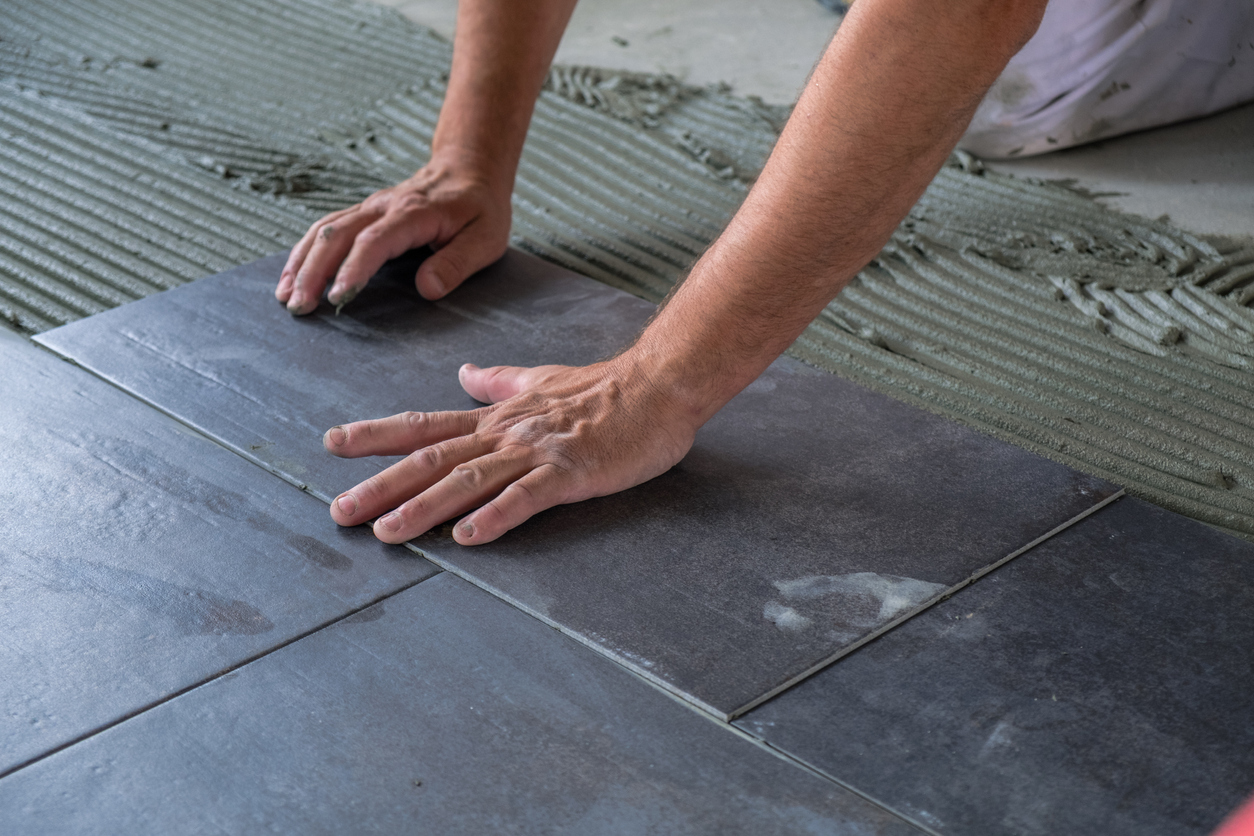
What’s the Difference between Grout, Mortars, and Thinset?
When most homeowners decide to work on a home improvement project, it is often because they want to increase the value of their home. Many realtors agree that renovating your kitchen or bathroom will guarantee a higher return on investment. One of the most common your tile installation project to tackle during a kitchen or bathroom remodel is replacing old laminate with durable and beautiful tile. If renovating your kitchen or bathroom is on your to-do list, the first step is to understand the supplies that you need. Here's what you need to know about the difference between mortar, grout, and thinset.
Grout vs. Mortar vs. Thinset
Before you head to the store to buy all your tiling supplies, you should have a good understanding of the difference between grout vs. mortar vs. thinset. Although these products seem similar, they are unique, so you should be prepared to use them correctly.
- Mortar: Mortar is designed to bind two surfaces together. It is used to spread out the foundation, to stick tiles onto the floor, and to keep them in place. Mortar is made of lime, water, sand, and cement, at it has a thick consistency to make it spreadable and adhesive.
- Thinset: Many people use the terms thinset and mortar interchangeably, and although their functions are similar, they are different. Thinset does serve the function of helping tile stick to a surface, but you might use it instead of mortar if you plan to tile a shower floor or when using heavier materials. Thinset contains cement, sand, and water.
- Grout: Grout is used as one of the last steps when tiling your floors. Once the mortar has had enough time to cure, the grout is used to fill the surfaces and spaces between the tiles. This also helps to keep the tiles in place and prevents scum and debris from getting caught in between. Grout may also contain cement, but it is much thinner than mortar to make it pourable. There are also epoxy or resin grouts available.
How Does Grout Differ from Thinsets and Mortar?
Grout is a unique substance compared to thinset and mortar. Grouting must never be skipped when doing a tiling project. Even if the tiles appear uniform when placed on top of the thinset or mortar, they still may not be completely aligned. Even if the tiles are off by a fraction of an inch, you will have some serious spacing issues that show up when your project is finished. Grouting isn't difficult, and it ensures that your project looks professional at the end. It works as a sealer to block any water, moisture, debris, and dirt from being absorbed into the foundation, but it also helps prevent the tiles from shifting around.
Consult with Our Professionals Before Starting a Project
If you’re preparing for a tiling project to upgrade your kitchen or bathroom, the right planning, tools, and installation technique are essential for doing a quality job. The team at Centura Tools has years of industry experience and can advise you on which tile installation tools are right for your project.
Our store offers a variety of products including tile cutters, large format tile tools, in-floor heating products, Schluter products, tile leveling systems, high-end tools, grout, thinset, mortars, application accessories, and more. Contact us at (416) 785-3311 or visit our store to see our amazing products.


